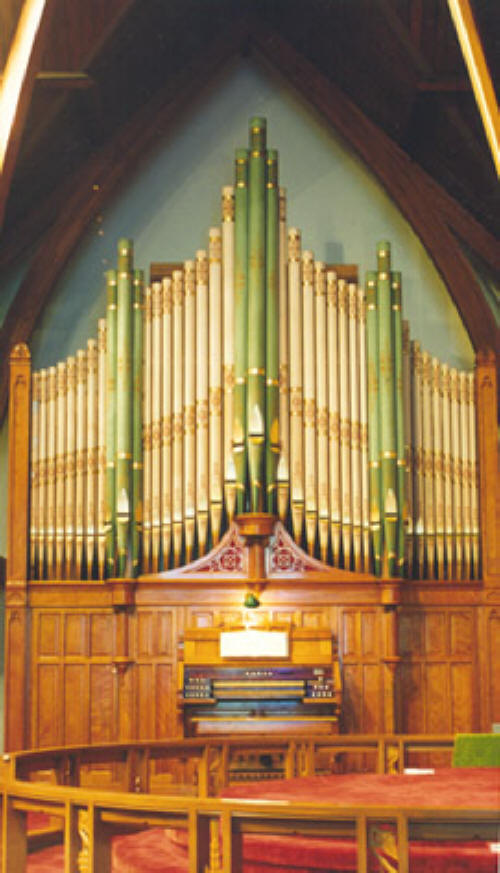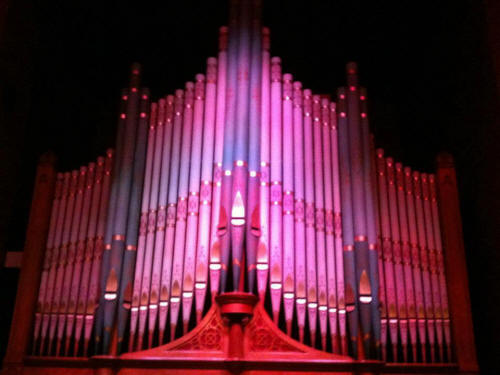|
Builder: Verney Organ Co., 1904 1971: Overhauled by Gerald Bailey 1977: Altered by John Dulin 1985: Restored by Dobson Organ Builders 1993: Moved by Dobson to Cedar Rapids 2014: Moved by Curt Schmitt/Randy Karstens to Philander Hall, Performing Arts School, Dixon, IL. Ranks: 19 Action: Mechanical/slider chests, tubular pedal Notes: This Verney organ was originally installed in the Methodist Episcopal Church of Parkersburg, IA in 1905 for $2500. This is the largest extant Verney organ. See further notes below. GREAT ORGAN 8' Open Diapason (1-19 in facade) 8' Melodia 8' Viola d'Gamba 4' Octave 4' Flute d'Amour 2.2/3' Nazard 2' Fifteenth (orig. Dulciana) Swell to Great Swell to Great Octave SWELL ORGAN 16' Bourdon Bass 16' Bourdon Treble 8' Violin Diapason (1-12 in facade) 8' Stopped Diapason 8' Salicional 8' Voix Celeste tc (2 ranks) 8' Aeoline 4' Fugara (restored from old pipes) 4' Flute Harmonic 2' Piccolo 8' Oboe Gamba (not original) Tremolo PEDAL ORGAN 16' Double Open Diapason 16' Bourdon Great to Pedal Swell to Pedal |
 |
|
The organ was built for the Methodist church in Parkersburg,
where it was restored by Dobson in 1985 following some alterations
from the 1970's. That congregation replaced its historic church with
a new building too small to accommodate the organ (the old building
was razed in 1993), so it was purchased by St. Michael's Episcopal
in Cedar Rapids in 1993. In 1997 St. Michael's merged with St.
John's and the name was changed to Christ Episcopal. The organ was
sold in 2014 to Philander Hall of VIVA! Performing Arts School in
Dixon, IL. The tubular pedal was electrified. Verney's business closed in 1909 after which William Verney went to work for the Burlington Organ Co, Burlington, IA and thereafter with a variety of other midwestern organ companies. There are two other known smaller Verney organs in Wisconsin and Indiana. The stencilled facade is drawn from the Great 8' Open Diapason and the Swell 8' Violin Diapason. All but 8 of the pipes speak. The elaborate stencilling and casework are original. In 1978, John Dulin removed the Great Dulciana, the Swell Fugara and Swell Oboe Gamba (labial stop), and for reasons unknown moved the Aeoline to the Oboe Gamba toeboard. In the Dobson restoration the non-original Oboe was removed from the Great, mitered, and placed on the Swell Oboe Gamba toeboard. A new Fugara was composed of older pipes, and a vintage Fifteenth 2' was placed on the Great Dulciana toeboard. Since the Dulciana was gone and the Great had a Nazard but no Fifteenth, it was decided to make this concession to improve hymn accompaniment at the expense of historical accuracy. Shown here is a picture from Philander Hall: |
|
 |
|